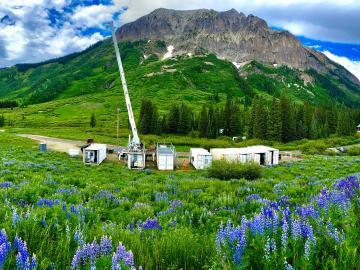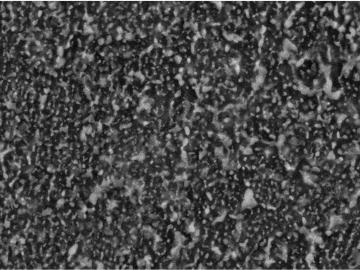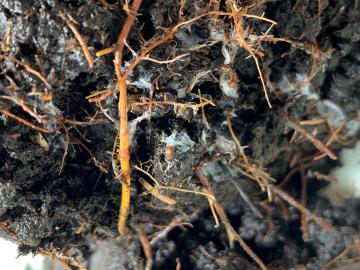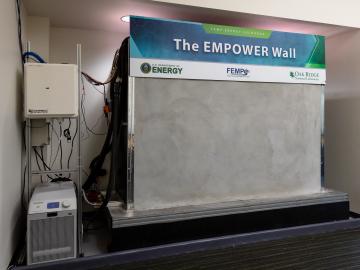
Filter News
Area of Research
- Advanced Manufacturing (15)
- Biology and Environment (53)
- Biology and Soft Matter (1)
- Building Technologies (1)
- Computational Engineering (2)
- Computer Science (8)
- Electricity and Smart Grid (2)
- Energy Science (100)
- Fusion and Fission (4)
- Fusion Energy (2)
- Isotopes (3)
- Materials (53)
- Materials for Computing (12)
- Mathematics (1)
- National Security (20)
- Neutron Science (16)
- Nuclear Science and Technology (2)
- Quantum information Science (7)
- Sensors and Controls (1)
- Supercomputing (54)
News Type
News Topics
- (-) 3-D Printing/Advanced Manufacturing (89)
- (-) Big Data (62)
- (-) Clean Water (30)
- (-) Grid (54)
- (-) Machine Learning (51)
- (-) Materials (87)
- (-) Polymers (18)
- (-) Quantum Science (59)
- Advanced Reactors (25)
- Artificial Intelligence (92)
- Bioenergy (84)
- Biology (100)
- Biomedical (53)
- Biotechnology (28)
- Buildings (50)
- Chemical Sciences (48)
- Composites (21)
- Computer Science (153)
- Coronavirus (30)
- Critical Materials (17)
- Cybersecurity (17)
- Education (2)
- Emergency (4)
- Energy Storage (64)
- Environment (164)
- Exascale Computing (52)
- Fossil Energy (7)
- Frontier (45)
- Fusion (47)
- High-Performance Computing (93)
- Hydropower (12)
- Irradiation (2)
- Isotopes (38)
- ITER (7)
- Materials Science (89)
- Mathematics (11)
- Mercury (10)
- Microelectronics (3)
- Microscopy (34)
- Molten Salt (7)
- Nanotechnology (29)
- National Security (63)
- Neutron Science (109)
- Nuclear Energy (85)
- Partnerships (37)
- Physics (38)
- Quantum Computing (39)
- Security (17)
- Simulation (51)
- Software (1)
- Space Exploration (23)
- Statistics (3)
- Summit (48)
- Transportation (66)
Media Contacts

New data hosted through the Atmospheric Radiation Measurement Data Center at Oak Ridge National Laboratory will help improve models that predict climate change effects on the water supply in the Colorado River Basin.

Oak Ridge National Laboratory researchers have additively manufactured a lightweight aluminum alloy and demonstrated its ability to resist creep or deformation at 300 degrees Celsius.

Oak Ridge National Laboratory researchers have developed a novel process to manufacture extreme heat resistant carbon-carbon composites. The performance of these materials will be tested in a U.S. Navy rocket that NASA will launch this fall.

A team led by ORNL and the University of Michigan have discovered that certain bacteria can steal an essential compound from other microbes to break down methane and toxic methylmercury in the environment.

A multidisciplinary team of scientists at ORNL has applied a laser-interference structuring, or LIS, technique that makes significant strides toward eliminating the need for hazardous chemicals in corrosion protection for vehicles.

Of the $61 million recently announced by the U.S. Department of Energy for quantum information science studies, $17.5 million will fund research at DOE’s Oak Ridge National Laboratory. These projects will help build the foundation for the quantum internet, advance quantum entanglement capabilities — which involve sharing information through paired particles of light called photons — and develop next-generation quantum sensors.

Anyone familiar with ORNL knows it’s a hub for world-class science. The nearly 33,000-acre space surrounding the lab is less known, but also unique.

An international problem like climate change needs solutions that cross boundaries, both on maps and among disciplines. Oak Ridge National Laboratory computational scientist Deeksha Rastogi embodies that approach.

New data hosted by Oak Ridge National Laboratory is helping scientists around the world understand the secret lives of plant roots as well as their impact on the global carbon cycle and climate change.

Oak Ridge National Laboratory researchers demonstrated that cooling cost savings could be achieved with a 3D printed concrete smart wall following a three-month field test.


